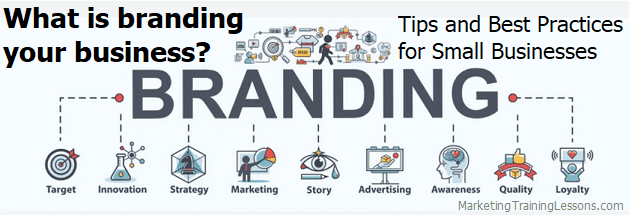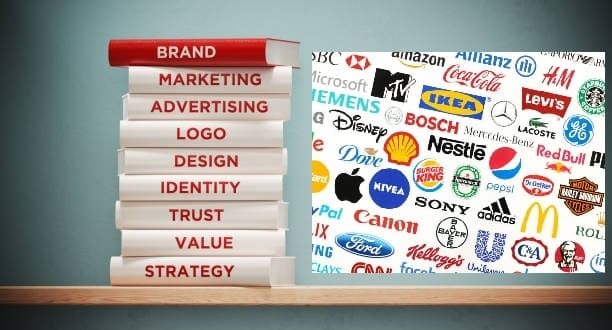What Is Branding Your Business

A Guide to Successful Branding: Tips and Best Practices for Small Businesses
Welcome to our guide on What is branding your business?.
You’re a small business owner looking to make your mark, right? Building a memorable brand isn’t just for the big corporations.
It starts with a distinct identity—something that makes you pop in a crowded marketplace.
It’s not only about designing a sleek logo or choosing your favorite color, either. Think bigger.
Branding shapes the vibe of every interaction your customers have with you—from how your emails sound, down to the feeling they get when they visit your site.
In this guide, you’ll find actionable tips and pragmatic advice tailored specifically for small businesses.
We’ll walk you through practical strategies so your brand doesn’t just show up, but actually sticks in people’s minds.
So, grab your notebook and let’s get down to the stuff that can push your business ahead of the competition. Time to make your brand work just as hard as you do.
Click here to see my #1 recommendation for making money online
What is Branding Your Business?
Branding isn’t just about a color scheme or a catchy logo—think bigger. It’s the whole deal: your company’s name, how you package products, the tagline everyone recognizes, even the design on your business cards.
Anything that makes your business instantly identifiable in a crowded market? That’s branding doing its job.
Smart businesses push branding everywhere: on packaging, digital ads, merch—basically, any touchpoint with customers. Why? Because standing out is half the battle.
If people recognize your products and remember your name, you’re already ahead of that faceless competition.
Here’s the payoff: strong branding doesn’t just snag new customers. It helps people understand what your business offers and, more importantly, why they should choose you over someone else.
Build trust, keep your reputation sharp, and watch as loyal customers keep coming back—and even do some word-of-mouth marketing for you. That’s the real value behind a well-built brand.
Building a strong brand isn’t just about slapping your name on everything and calling it a day. Some businesses lean hard into creating a unique name or memorable logo—something that grabs attention and sticks in people’s minds.
Others invest heavily in storytelling, making ads that connect emotionally and actually make you care. Strange as it sounds, yeah, sometimes a cereal commercial can tug at the heartstrings.
Then there are the companies that put all their chips on reputation: best-in-class quality, cutting-edge innovation, or something else that puts them a step ahead. The most successful brands? They borrow a little from each playbook.
The whole process kicks off with research—digging deep into what drives your target customer’s decisions. You’ve got to know what matters to them, whether that’s price, performance, or how a product makes them feel.
Once you know that, you’re ready to shape a brand strategy: choosing a name, designing a logo, and creating marketing assets that actually tell your story. Everything funnels into building a clear brand identity that fits your mission and values.
At the end of the day, that’s what drives recognition and loyalty. If you get it right, customers keep coming back and recommending you.
That’s when the brand really works for the business—not the other way around.
Goals of Branding Your Business
There are a number of goals that businesses can achieve through branding. Perhaps the most obvious is increasing awareness of the company and its products or services.
This is especially important for small businesses who may be competing against larger, more established companies. Creating a strong, recognizable brand can help level the playing field.
Another common goal is to build customer loyalty and create an emotional connection with consumers. When customers feel positively about a brand, they are more likely to continue using its products or services and recommend them to others.
Branding can also help businesses differentiate themselves from their competitors. This will make it easier for customers to remember them when they’re ready to make a purchase.
Finally, effective branding can also lead to increased sales and profits. A well-recognized brand can command a premium price and customers may be more likely to choose it over a lesser-known competitor.
Strong branding can also help businesses expand into new markets and attract new or repeating customers.
Benefits of Branding for Small Businesses
There are many benefits of branding for small businesses. A strong brand can help you to:
– Differentiate your business from your competition
– Build customer loyalty
– Increase customer lifetime value
– Attract new customers
– Enhance employee motivation and morale
– Increase shareholder value
A well-designed and executed branding strategy can have a profound impact on the success of your small business. By taking the time to develop a strong brand, you can reap the many benefits it can offer.
Tips for Effective Branding
1. Define your brand. What are your core values and messaging? What makes you unique?
2. Develop a strong visual identity. Your logo and other visuals should be consistent across all platforms and reflect your brand personality.
3. Build a comprehensive social media strategy. Platforms like Facebook, Twitter, and Instagram provide great opportunities to connect with potential and current customers.
4. Invest in content marketing. High-quality blog posts, infographics, videos, etc., can help drive traffic to your website and build trust with your audience.
5. Make sure your website is search engine optimized (SEO). This will help people find you when they’re searching for keywords related to your business online.
6. Analyze your data regularly. Use Google Analytics or another platform to track how people are interacting with your brand online so you can make necessary adjustments.

Click here to see my #1 recommendation for making money online
Steps for Developing a Successful Brand Identity
There is no one definitive answer for how to develop a successful brand identity. However, there are some key steps that all businesses should take in order to create a strong and recognizable brand.
1. Do your research: Before you even begin to think about your branding, it’s important to spend some time researching your industry, target market, and competition.
This will help you understand what makes your business unique and what you need to do in order to stand out from the rest.
2. Define your brand: Once you’ve done your research, it’s time to start thinking about what kind of image you want your brand to project.
What values do you want to communicate? What feeling do you want your customers to have when they interact with your business? Keep these things in mind as you move on to the next step.
3. Create a visual identity: Your visual identity is how customers will see and remember your brand. No matter if this is on your website, social media, print materials, and more.
It should be consistent across all platforms and reflect the overall feeling or message you want to communicate with your customers. Think about things like colors, fonts, and logo design as you put together your visual identity.
4. Build a strong presence online: In today’s digital world, it’s essential for businesses to have a strong online presence.
This means having an up-to-date website that is easy to navigate, active social media accounts, and tailored content that speaks directly to your target audience.
5. Measure your success: Make sure you are tracking and measuring the success of your branding efforts in order to make any necessary changes or adjustments.
This could be anything from tracking website visits to analyzing customer feedback on social media.
Examples of Successful Brands
The key to a successful brand is to create an emotional connection with your customers. When your customers feel connected to your brand, they are more likely to become loyal, lifelong fans.
There are many ways to create an emotional connection with your customers. Here are a few examples of successful brands that have done just that:
1. Apple: Apple has built a strong emotional connection with its customers by creating beautiful and user-friendly products.
This emotional connection has been so strong that Apple has been able to charge premium prices for its products and still have passionate fans lining up to buy them.
2. Nike: Nike has also created a very strong emotional connection with its customers. Nike’s “Just Do It” slogan resonates with so many people because it speaks to the company’s core values of determination and perseverance.
Nike also does an outstanding job of using celebrity endorsements to connect with their target audience.
3. Disney: Disney is the master of creating emotional connections with its customers. Disney tells stories that resonate with people of all ages and backgrounds.
This strong emotional connection is what keeps people coming back for more. This can be visits to their theme parks or watching their movies over and over again.
4. Harley-Davidson: Harley-Davidson has created a very loyal customer base by appealing to their emotions.
Harley-Davidson riders feel a sense of freedom and adventure when they ride, and this emotionally charged experience keeps them coming back for more.
Measuring Your Brand’s Performance
When it comes to measuring your brand’s performance, there are a few key metrics you should keep in mind.
First, take a look at your brand’s reach. How many people are familiar with your brand? Are you getting exposure to new audiences?
Next, consider your brand’s engagement. Are people interacting with your brand? What kinds of interactions are they having?
Finally, think about your brand’s reputation. What do people think of your brand? Are you seen as a positive force in the industry?
To get a better idea of how your brand is performing, keep track of these metrics over time. That way, you can see if there are any changes or trends in your brand’s performance.
Click here to see my #1 recommendation for making money online
Conclusion
Branding is essential for any small business, and it can have a significant impact on the success of your company.
By following these tips and best practices, you can create a strong brand identity that resonates with customers and potential customers alike.
From defining your target audience to creating an effective logo design, there are many steps involved in successful branding that should not be overlooked.
With proper planning and dedication to creating a memorable brand identity, you will be well on your way to building an impressive customer base as well as increasing profitability.
Thanks for reading this article about What is branding your business.
Click this link to read an interesting story and conversation about branding and look at branding your business from a different angle.

